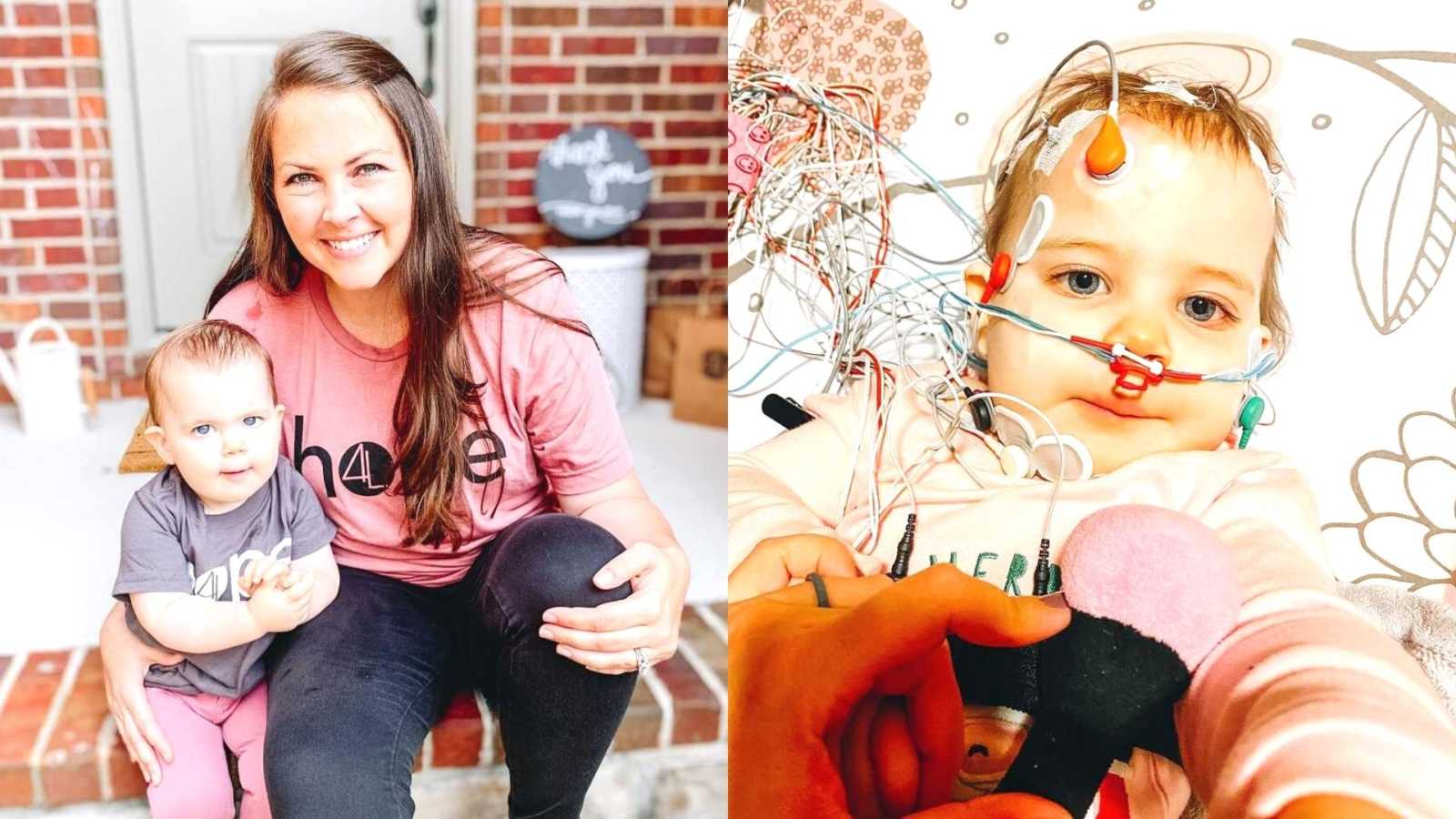“Looking back, I’m not sure when it happened, when our life as we knew it began crumbling. I was cleaning up from our Fourth of July party the day before. It was the quintessential summer party with friends: water play, sweet treats, cool drinks. I tidied as I pushed Quincy, my then 18-month-old, around the house in her princess cozy coupe. It was the kind of slow morning I had come to love.
While I pushed her, I daydreamed about another baby and sweet sibling snuggles, despite the recent decision my husband and I made to wait a few more months before trying. I was 2 days late, and the daydreams of Quincy holding a little brother or sister were not subsiding. I was never one of those women who just took a pregnancy test because she was late. We always had to try, and I always tested early because two of our babies were in heaven.
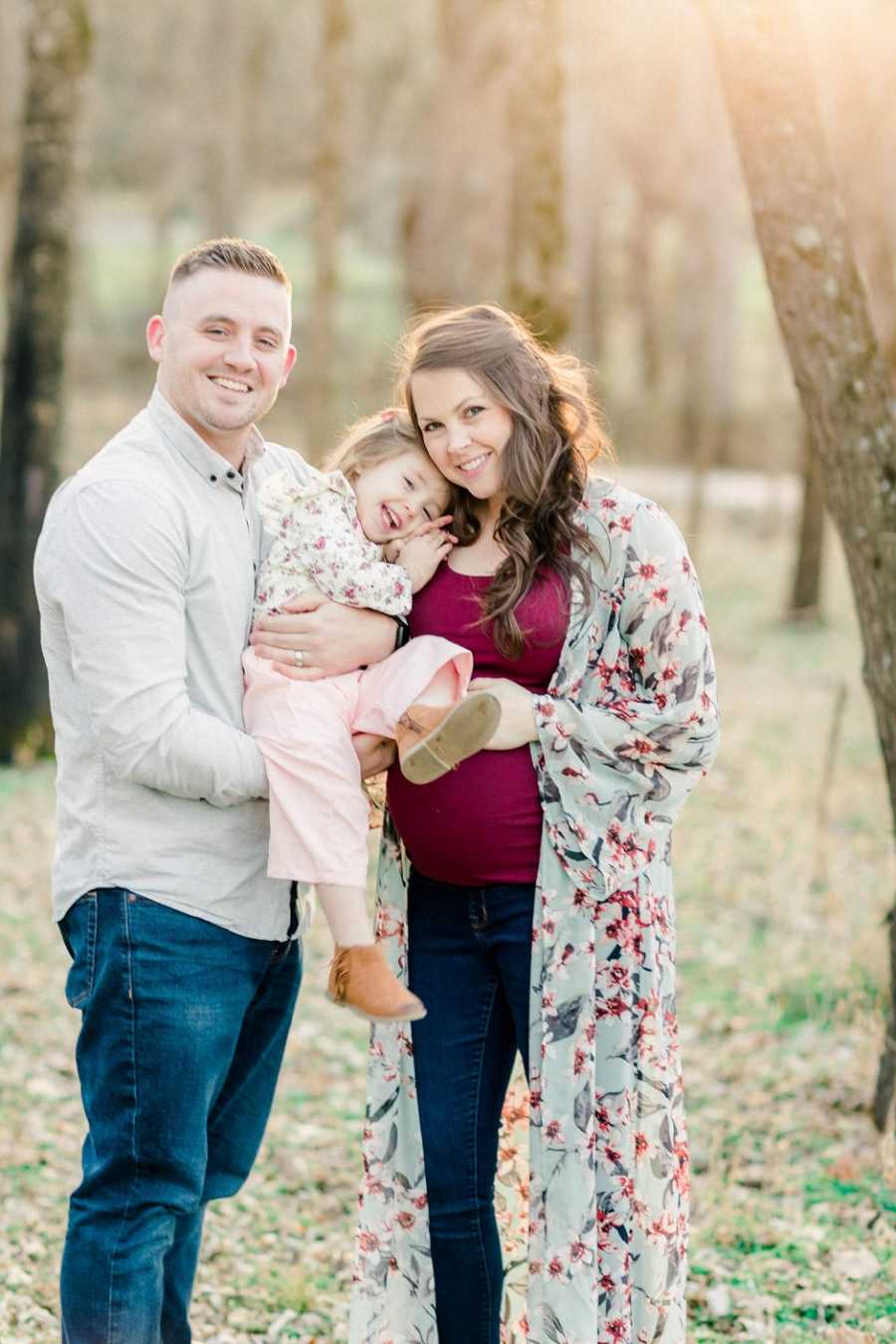
Quincy and I stopped at the bathroom. I took the test, laid it on the counter and continued pushing her. I don’t know what I hoped for, but as I saw the two lines, I smiled and thought with relief, ‘This truly wasn’t our own plan.’ I scooped Q up and told her what a good big sister she was going to be, and naïvely promised her nothing would change. I had no idea just how right—and wrong—I was.
Landry was born via s-section in early March due to breech positioning. She took our breath away from the moment we laid eyes on her. She was stunning. She had big blue eyes like her daddy. She had dark hair like her sister, though we quickly learned she was more temperamental. She didn’t love a lot of movement—changing positions seemed to make her very angry. My career as a physical therapist made me ever watchful—in fleeting moments, her tone would catch my eye. Little jitters would nag at me. Her blood sugar was tested multiple times in the hospital. I remember asking her pediatrician, ‘Are you sure you don’t feel there is anything neurological going on?’ He was sure, and my therapist friends were sure, and a majority of the time, so was I. But in some moments, I still felt a familiar sinking feeling…

5 weeks later, I laid Landry on her Boppy Lounger on the floor and sat down next to her to pump. My incision was healing, but I was still sore, and bitter over having to have a c-section. Quincy was at daycare and her daddy was at work. Landry was still a fussier baby, but we were finding our groove as a family of four. I had suppressed my worries and chalked them up to my overactive therapist mind. But not this morning. This morning, I knew something was wrong.
I watched Landry present with seizure-like symptoms. Every nagging worry came rushing back to my mind and I knew it was bad, but I had no idea how bad. At the hospital, we were promptly admitted. Her EEG that evening was normal. The next morning, she was sedated for a MRI. As we met her in recovery, I asked if her jerking arm was normal for coming out of sedation. I was told it was.
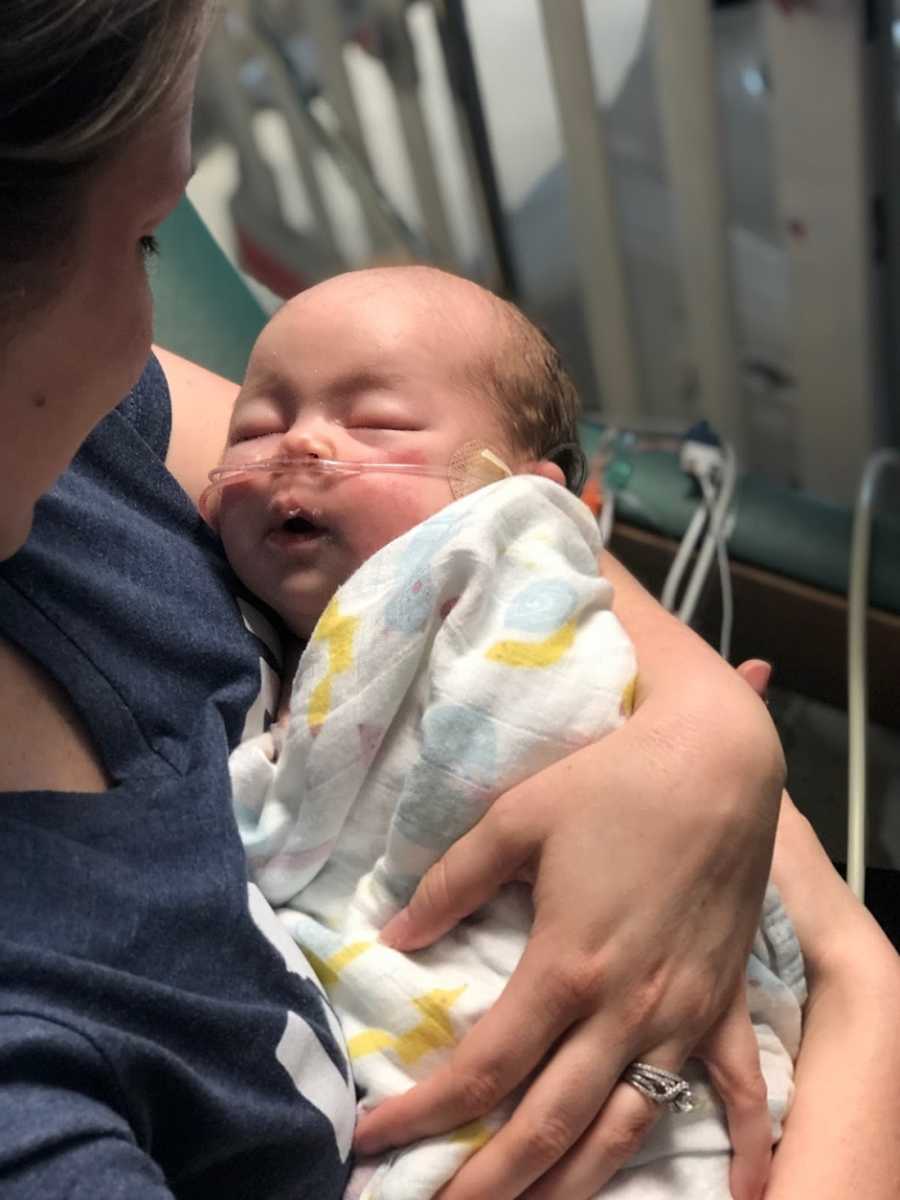
Then, her eyes began to move the same as the day before. The next few hours would hold the most traumatizing moments of my life. The physician rushed in and treated her with multiple doses of seizure rescue medication, to which she did not respond. A doctor from the PICU took over and more nurses flooded the room as I watched from behind them in horror. When they beckoned us to her side, I held her head and did not let go, pleading with God to protect her brain and make the seizure stop. We walked quickly with the team as she was transferred to the PICU. She was intubated to protect her airway as they gave her a larger dose of medication to stop the presumed seizure. Her 24-hour EEG was clear, and she was weaned from the ventilator and extubated. Her symptoms returned shortly after.

We left the PICU after a 6-day stay with seizures that weren’t actually seizures and a long list of differential diagnoses. We waited for answers through continued episodes. Each one adding trauma as we watched our tiny newborn’s eyes move in every direction, lips smacking, breathing labored, her extremities moving without permission. We were completely helpless to do anything for her. Outside of those episodes, she was learning to smile and we were falling even more in love with her little personality. At night, I was pouring through every medical article I could find with keywords—seizure, dystonia, seizure-like movements in newborns—learning all I could and forming a rather long differential diagnosis list. Of course, favoring the diagnoses left behind in infancy. Fitting each one to our lives and formulating plans for how we would conquer it, how it would be okay.
As the episodes intensified, I sobbed in the quiet hours of the night while everyone was sleeping, clutching Landry and praying to keep her. Every appointment, I braced myself for words which would change our lives forever. Then, one day we heard them. Her genetic panels were back. ‘There is an abnormality.’ I can still hear his voice in my head and my mind responding, ‘No, no, no, no, no…’ as I began begging God it would be inconsequential—the mild dystonia I researched, or the treatable epilepsy. The ground gave way and our world began to shift… nothing would ever be the same.
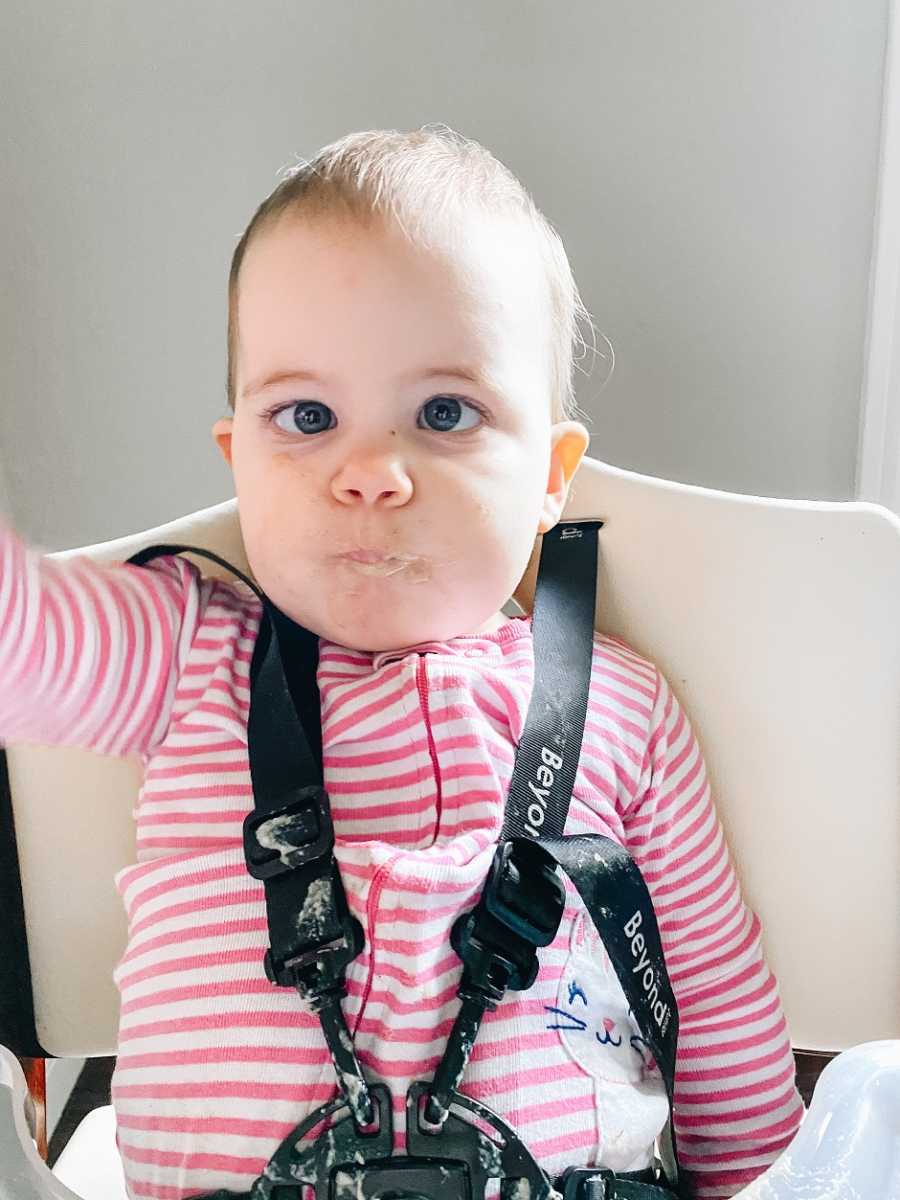
Her neurologist wasn’t familiar with the gene. It could cause one of three different neurological disorders, most likely this underlined one. Then he handed us a piece of paper, saying, ‘Alternating Hemiplegia of Childhood.’ I spent the coming days and nights reading every research article I could find with those words in it, every foundation website, searching support groups for families, stalking their pages to get a glimpse of their children. Gathering any and all knowledge I could on those four words. Initial denial began to subside, and the more I learned, the more devastating these words became. This wasn’t going away. It was worse than we had imagined. There is no treatment. There is no cure.
I learned Landry is literally one in a million. This rare genetic disorder is characterized by attacks of paralysis, dystonia, rapid eye movement, and sometimes seizures. These attacks are often caused by overstimulation. For instance, if Landry gets too tired, is startled by a loud noise, or eats carrots, an episode could ensue. It would also mean when she gets really excited to see someone, her whole body could lose the ability to move. One minute, our sweet girl is smiling and rolling, and the next minute her gaze is fixed and her consciousness altered. We are frozen and helpless with each different episode, waiting and praying for our girl to return to us. The most frustrating and scary thing I realized is what AHC looks like for Landry could change in an instant. Episodes down the road could affect her breathing and her ability to swallow, or even result in sudden death.
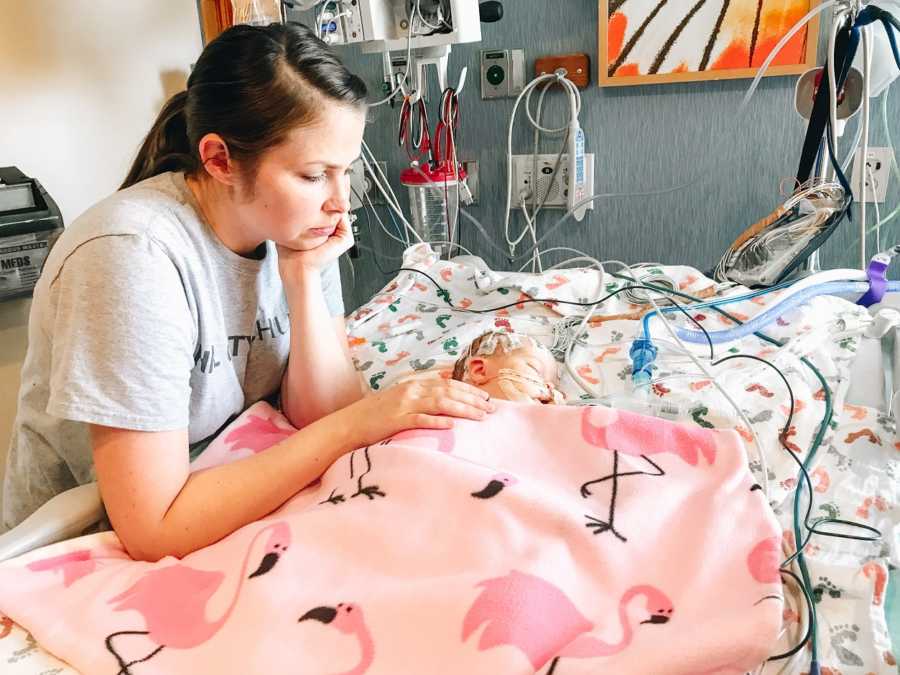
Alternating hemiplegia of childhood is a cruel thief stealing life from our baby girl. I took breaks from reading only to sob uncontrollably. I cried for Quincy—for the immeasurable ways her life would be harder now, for the typical things she would miss out on, the difficult things she would have to endure. I cried for our family—for the many hours we would spend split it two; for the vacations and outings which no longer seemed possible. I cried for my marriage—for the weight placed upon it from sleepless nights and financial strain.
I cried for me—for the loss of my career, friends, and life outside our home; for the fear which would be my constant companion. I cried for Landry—for the pain she would endure, and how hard she would have to work for the littlest of victories. Initially, I thought the sadness and anger would swallow me whole. I didn’t want this for any of us. I wasn’t built for it. One substitution of an amino acid, called proline, for one called serine at position 323 on the ATP1A3 gene, had yielded catastrophic results. I knew it wasn’t as simple as a careless Maker. No, this was on purpose. Our intricate, all-powerful, and all-knowing God made her this way for a reason—a truth which has caused me both pain and peace.
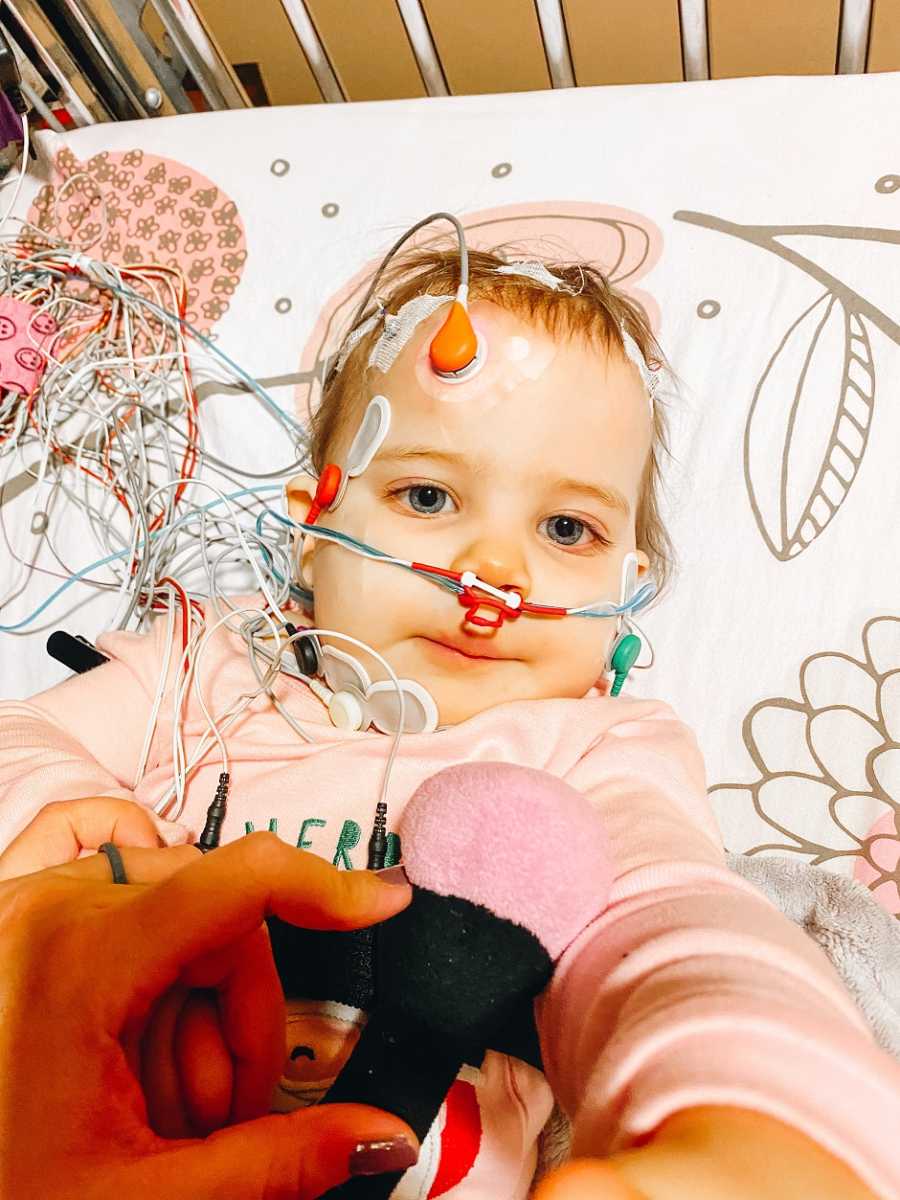
My working knowledge of the world of special needs left me unable to just accept things will be all right. I wasn’t just handed a diagnosis. I was handed a million different realities. The truth of this particular diagnosis is everything will be fine for a bit, and you will never know when it won’t be anymore. It isn’t a single injury she will heal from. It is a constantly changing, an unknown trajectory. Each day looks different than the last. She won’t get better with age. There is no stability; we are not safe. The reality is not as simple as loving her no matter what, this is a given. The reality is our life is going to be exponentially harder than it was prior to hearing those four words. There will be trauma with each episode. There will be career loss and depression. There will be anxiety. There will be an 80% chance our marriage will end in divorce. There will be a lack of understanding and support from people who were closest to us. There will be equipment and therapies and doctors’ visits. There will be fights to receive services we wish we didn’t need in the first place. There will be times we would do anything to just feel like ourselves again.
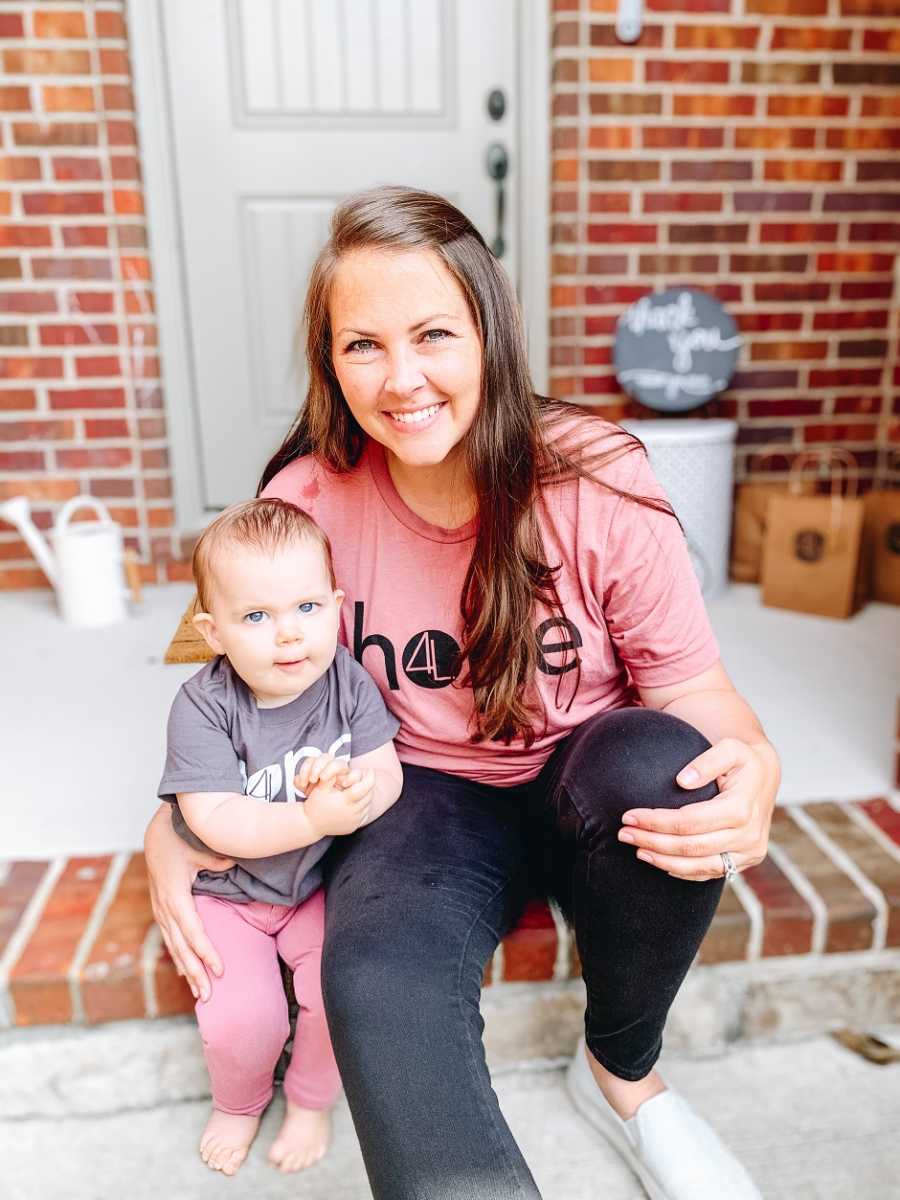
I could see our whole future play out in so many different ways, and each of them different than I had ever imagined. Life since diagnosis has been a barrage of hard decisions, delicate balancing acts, grieving, and healing. I stepped away from a career I loved and a program I built to care for my girls. My husband started a business while working full-time in order to provide for our family. We constantly balance, pushing Landry for development gains while avoiding episodes and letting her experience life, and shielding her from uncontrollable environments. I see patients occasionally and teach a little at a nearby university. I am so thankful for my education and the way it allows me to care for Landry. I am still trying to figure out how to build community and care for myself and my marriage. I joined the board of an AHC parent-led organization, one of three that have collaborated to push cutting-edge gene therapy research into fruition to end AHC. We are doing everything we can to raise awareness and funds to heal Landry on this side of heaven.

Landry is 20 months old now, and such a light in our lives. Her smile brings unparalleled amounts of joy. She fights for milestones, loses them, and then fights again. She is the hardest worker I have ever seen. She loves watching her sister and pulling her hair, being chased by daddy brings big giggles, and she loves her momma fiercely. She loves being outside and in the middle of any activity, even though she may pay for it later, physically, with eye movement or full-body paralysis. We are thankful for every moment with her and know we are not guaranteed the next. After Landry’s diagnosis, I thought our world was ending. Life as we knew it certainly did. I imagined being a lot of things: a faithful wife, a devoted lover of Jesus, a creative and thoughtful mom, an ambitious therapist, a loyal friend. But a medical mom and advocate was a call I did not want to answer.
When an episode starts, every fiber of my being wants to hide. I want to close my eyes and not watch my baby suffer. But God continues to build me into something I never wanted to be. I face my fears so Landry will be held, known, and loved fully in her toughest moments. I have fought hard against this life, yelling and cursing at God for what He had done to my child. God was persistent in His pursuit of me and in the renewing of my heart. God has not forsaken Landry, or us. He made Landry in His infinite power, wisdom, and sovereignty. He made her, knowing He has already conquered Alternating Hemiplegia of Childhood, and the tears we cry are not in vain. Landry will be healed. One by one, God is handing us stones to rebuild. This life isn’t going to look like our old one. It isn’t going to look anything like we thought it would. It will be harder. It definitely won’t be ‘normal.’ But I think it will make us more like Jesus, and that will be beautiful.”
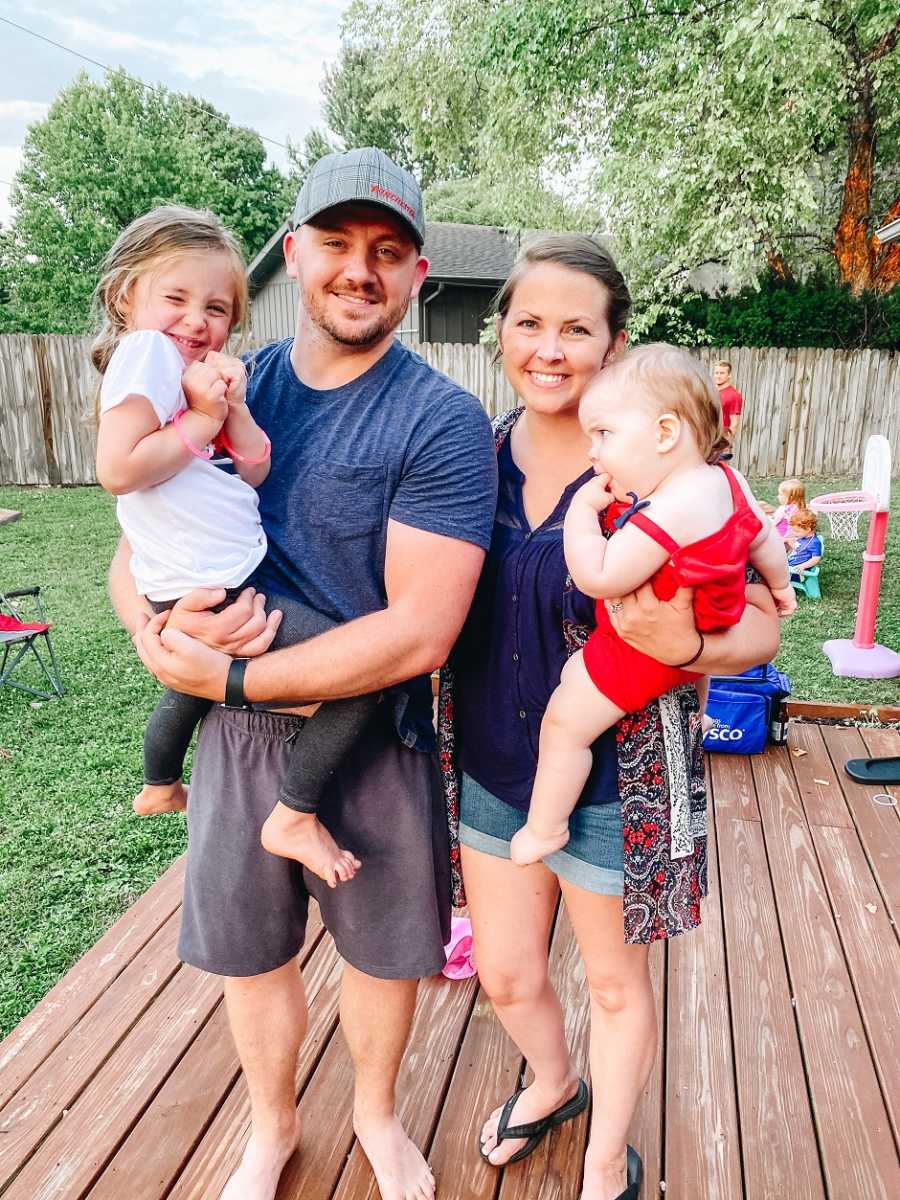
This story was submitted to Love What Matters by Katelyn Wilson of Springfield, Missouri. You can follow her journey on Instagram, Facebook and her website. Submit your own story here, and be sure to subscribe to our free email newsletter for our best stories, and YouTube for our best videos.
Read more stories like this:
Help us show compassion is contagious. SHARE this beautiful story on Facebook with friends and family.

